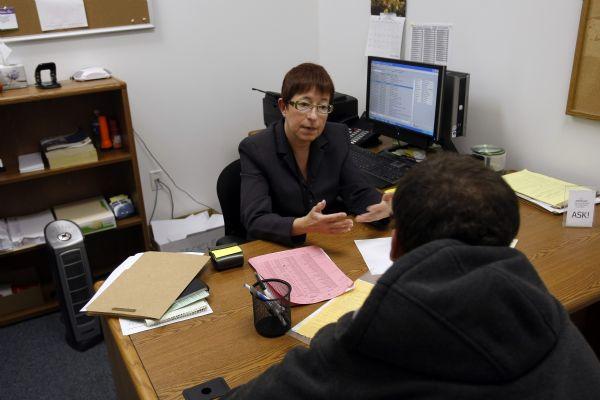Senate President Pro Tem Darrell Steinberg (D-Sacramento) said Wednesday that his Senate Democratic Caucus wants the spending in exchange for a three-year extension of federal judges' Dec. 31 deadline for removing more than 9,600 inmates from state prisons.
Steinberg said the Senate proposal was preferable to Brown's plan to spend $315 million this year and $415 million in each of the following two years on alternate housing for inmates.
"Temporarily expanding California's prison capacity is neither sustainable nor fiscally responsible," Steinberg wrote to Brown and inmates' attorneys Wednesday. Inmate lawsuits led to the judges' ruling that state prisons are unconstitutionally crowded.
Any extension would have to be approved by the judges, who have castigated Brown for stalling on obeying their order to shed more prisoners.
Steinberg, flanked by 16 Democratic senators in a Capitol hallway, said the Senate plan is modeled on a 2009 state program that reduced new prison admissions by nearly 9,600.
The plan won a quick endorsement from the prisoners' attorneys.
"Sen. Steinberg's substantive proposals are acceptable to us and we are open to an extension" if all parties can agree on an approach "that will resolve the chronic overcrowding problem in the state's prisons," the attorneys said in a statement.
The lawyers said they were willing to meet with the governor and discuss ways to end federal court oversight of prison medical care, imposed because the judges said overcrowding led to inadequate healthcare and needless inmate deaths.
The judges are unlikely to extend their Dec. 31 deadline without evidence that the proposal would result in meaningful policy changes, said legal scholar Erwin Chemerinsky, dean of the law school atUC Irvine.
"I think the court wants to be sure this is not another delay," Chemerinsky said.
Steinberg's plan drew sharp criticism from Gov. Brown and Assembly Speaker John A. Pérez (D-Los Angeles).
"It would not be responsible to turn over California's criminal justice policy to inmate lawyers who are not accountable to the people," Brown said in a statement.
"My plan avoids early releases of thousands of prisoners and lays the foundation for longer-term changes, and that's why local officials and law enforcement support it," he said.
Pérez said in a separate statement that he was "deeply skeptical about Senator Steinberg's approach." It would give more power to "prisoner plaintiffs who favor mass release of prisoners," Pérez said.
Steinberg countered that his plan would also avoid early releases. But there may be no more money available for rehabilitation if the state spends more than $1 billion on incarceration over the next three years, the senator said.
Steinberg suggested that a middle ground might be found. "Does this lead to conversation that leads to a solution and compromise? I hope," Steinberg said. "You know me. It's not my way or the highway. We are putting down a settlement proposal here."
But time is short. Steinberg called for an agreement by Sept. 13, the Legislature's last meeting day this year. The settlement would provide for a panel of experts to set a new prison population cap.
In addition, an advisory panel would be formed to restructure sentencing laws so fewer offenders would be sent to prison in the long run.
The state "cannot assume that the plaintiffs and their lawyers, and the federal court, will agree to a three-year extension," said Sen. Jim Nielsen (R-Gerber).
On the other hand, nobody wants to be responsible for releasing thousands of inmates early because of a stalemate, said Raphael J. Sonenshein, executive director of the Edmund G. "Pat" Brown Institute of Public Affairs at Cal State L.A.
"You'd have to think they are going to find some accommodation," Sonenshein said.
Meanwhile, Steinberg canceled a Senate confirmation hearing for two corrections department directors appointed by the governor.
"We have additional questions about the administration's ongoing corrections policy," said Steinberg spokesman Mark Hedlund. "It makes sense to wait before we consider those two appointments."
By Patrick McGreevy
patrick.mcgreevy@latimes.com
Times staff writers Anthony York and Paige St. John contributed to this report.
Copyright © 2013, Los Angeles Times








